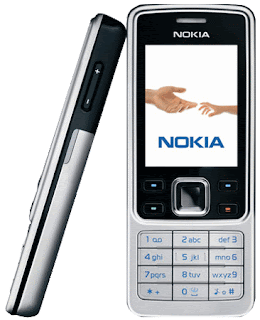Mobile Phone
Most current mobile phones connect to a cellular network of base
stations (cell sites), which is in turn interconnected to the public
switched telephone network (PSTN) (the exception are satellite phones).
Cellular networks were first introduced in the early to mid 1980s (the
1G generation). Prior mobile phones operating without a cellular network
(the so-called 0G generation), such as Mobile Telephone Service, date
back to 1945. Until the mid to late 1980s, most mobile phones were
sufficiently large that they were permanently installed in vehicles as
car phones. With the advance of miniaturization, currently the vast
majority of mobile phones are handheld. In addition to the standard
voice function of a telephone, a mobile phone can support many
additional services such as SMS for text messaging, email, packet
switching for access to the Internet, and MMS for sending and receiving
photos and video.
The world's largest mobile phone manufacturers include Audiovox,
BenQ-Siemens, High Tech Computer Corporation, Fujitsu, Kyocera, LG,
Motorola, NEC,[i-mate], Nokia, Panasonic (Matsushita Electric), Pantech
Curitel, Philips, Sagem, Samsung, Sanyo, Sharp, Siemens SK Teletech,
Sony Ericsson, T&A Alcatel, T-Mobile, and Toshiba.
The world's largest mobile phone operators (based on customer totals) include China Mobile, Vodafone, and China Unicom.
There are also specialist communication systems related to, but
distinct from mobile phones, such as Professional Mobile Radio. Mobile
phones are also distinct from cordless telephones, which generally
operate only within a limited range of a specific base station.
Technically, the term mobile phone includes such devices as satellite
phones and pre-cellular mobile phones such as those operating via MTS
which do not have a cellular network, whereas the related term
cell(ular) phone does not. In practice, the two terms are used nearly
interchangeably, with the preferred term varying by location.
Luxembourg has the highest mobile phone penetration rate in the
world, at 164% in December 2005.[1] The total number of mobile phone
subscribers in the world was estimated at 2.14 billion in 2005.[1].
Around 80% of world's population have mobile phone coverage as of 2006.
This figure is expected to increase to 90% by the year 2010.[2]
At present, Africa has the largest growth rate of cellular
subscribers in the world.[3] African markets are expanding nearly twice
as fast as Asian markets.[4] The availability of Prepaid or pay as you
go services, where the subscriber does not have to commit to a long term
contract, has helped fuel this growth on a monumental scale, not only
in Africa but on other continents as well.
All European nations and most Asian and African nations have adopted
GSM. In other countries, such as the United States, Australia, Japan,
and South Korea, legislation does not require any particular standard,
and GSM coexists with other standards, such as CDMA and iDEN.





















